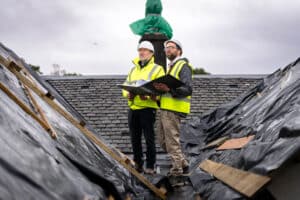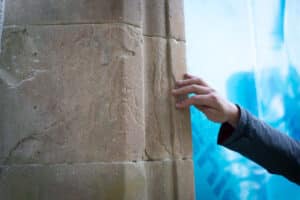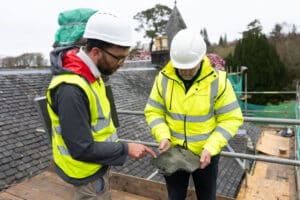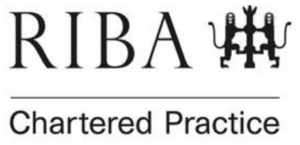We all know that finding the right contractor for a job can be a headache. But it’s usually obvious who the right person for the job should be: Got a pipes problem, call a plumber; wires in a twist, email the electrician. But what if you need your whole building assessed? We’re talking about when stonework needs attention, or there’s damp coming from different sources, the roof has issues, or the energy performance is draining resources. People often assume that they need a building surveyor at this point, and we can see why. However, it really pays to call an experienced architect to do a condition report* instead.
Perhaps you’ve just bought an older property, or you’re thinking of buying and need to assess the work to be done. Or maybe you own a historic home that needs upgrading. The reason an architect is the best person to bring on board to assess the state of that building at this point is because they not only understand what the problems are, but will also know the best ways to fix them.
You may have heard the Goethe quote about architecture, which states, “Music is liquid architecture and architecture is frozen music”. He was right. Like music, architecture has structure, rhythm, foundations, flourishes of expression, empty (silent) parts, and finials at the high points. But if your piece of music is sounding discordant, it is the conductor who will understand where the problem is coming from. He or she is the expert with an overview of both problem and solution.
In architecture, that person is the architect. They are in the best position to offer a holistic assessment of a building. There are many specialisms within architecture of course so it also pays to seek out one with the right knowledge for your type of building.
Much of the work of our practice involves working with traditional buildings. As well as reporting on the problems that we find in them, we spend a great deal of time actually repairing and often rebuilding and extending those buildings.
For us, a holistic assessment of a building will include the rigorous exercise of a condition survey whether that is a pre-acquisition visual inspection, or a more detailed disruptive survey. In addition to that, however, it may also include a look at the more aesthetic aspects such as will it be possible to lift the appeal of a neglected building which may have been harmed by previous ill-advised alterations? We can assess what uses for the building are feasible, and what list of things might need doing to make it warm and comfortable to inhabit.
By choosing an architect for your condition report, you will know that this person will be thinking longer term than getting to the end of the production of the report. That feeling in the mind of the architect is one of responsibility and realism for what could come next. This is what you want: Impartial advice and someone to talk to about the next steps. You’re not obligated to act on their advice.
Conservation and historic building good practice has evolved a great deal in the 35 years of my career. Unfortunately, not all practitioners in the industry have kept up and there is still a lot of poor advice being given, particularly in the field of energy performance upgrading work. The solutions have become more complex at specification stage, particularly around moisture management within buildings and improving the thermal envelope. (You’ve only got to look at the recent insulation scandal to realise how badly things can go in the wrong hands.) There is a list of fundamentals that a good architect will go through when doing a building survey, and the reports are invaluable. However, it is often in the “what now” discussions where the added value of a conservation architect over a building surveyor or more general architectural practitioner is most strongly apparent.
When a building study discussion develops into a brief and then into a project, the architect’s role is again like that of an orchestra conductor. The condition report stage is like rehearsals, then when it comes to design and build, there are many contributors to coordinate and sequences (like movements) to go through. When the music stops the completed work must stand up to criticism and be worthy of all the combined effort and expense. It is frozen again.
If you want to commission a condition report, or have an initial conversation about the condition of a building or discuss opportunities to make better use of a building, we at Thomas Robinson Architects would be pleased to hear from you. Contact us here >
*Condition reports can also be called building surveys, or condition surveys. It’s a thorough assessment of your building and any problems it has at a given moment in time.




















